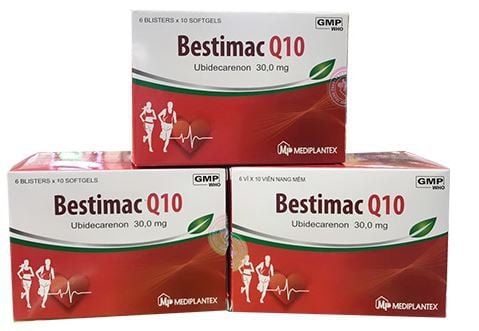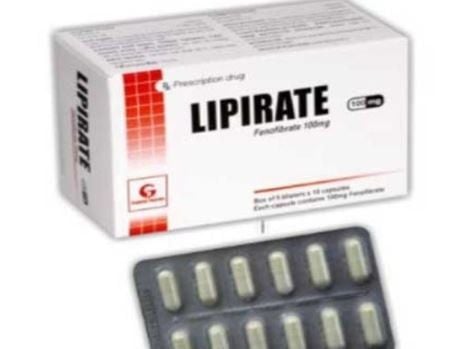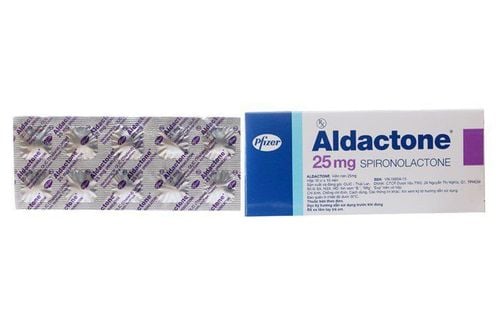This is an automatically translated article.
Bestimac Q10 is used in the treatment of coenzyme Q10 deficiency, mitochondrial disease, and several other conditions. Read on for more information on the effects of Bestimac Q10 and how to use it safely.
1. Effects of the drug Bestimac Q10
The main ingredient of Bestimac Q10 is Ubidecarenon 30mg. Ubidecarenon is a fat-soluble Quinone, it is synthesized in cells and participates in many important processes such as:ATP synthesis in mitochondria; Transport of electrons in the plasma membrane; Phosphoryl-oxidation in mitochondrial and other cell membranes is involved in energy conservation. Ubidecarenon in Bestimac Q10 has the following effects:
Helps to prevent oxidation and stabilize cell membranes, limiting the reduction of metabolites needed to synthesize ATP; Ubidecarenon is a redox carrier in the mitochondrial respiratory chain, between NADH dehydrogenase and succinate dehydrogenase of the cytochrome b-c1 system; Ubidecarenon is structurally similar to vitamin K, so it has similar properties to a vitamin; Ubidecarenon helps to eliminate free radicals produced by lipid peroxides. The drug Bestimac Q10 is used in the following cases:
Deficiency of coenzyme Q10; Mitochondrial disease, including encephalopathy and cardiomyopathy due to cellular respiratory chain deficiency; Support for treatment of hypercholesterolemia in patients on long-term treatment with HMG-CoA reductase inhibitors; As an adjunct or co-adjuvant in the treatment of congestive heart failure in patients who have not responded well to conventional therapies, especially HMG-CoA reductase inhibitors. Bestimac Q10 is contraindicated in the following cases:
People who are sensitive to Ubidecarenon or any ingredient of the formula.; People who are allergic to soy or peanuts. It should be noted when using Bestimac Q10 in the following cases:
Potential accumulation of Ubidecarenon may occur in patients with biliary obstruction or liver failure. So be careful in this case. Bestimac Q10 contains the excipient Sorbitol, which should not be used by people with rare hereditary problems of fructose intolerance.

Bestimac Q10 được sử dụng trong điều trị thiếu hụt coenzym Q10
2. Dosage and how to use Bestimac Q10
How to use Bestimac Q10:
Take orally; Drink with half a glass of water; Drink after eating. Reference dosage of Bestimac Q10: 1 tablet x 3 times/day.
If you forget a dose of Bestimac Q10, take it as soon as you remember. If it is almost time for your next dose, take the next dose as scheduled.
Currently, there are no specific reports of symptoms encountered with overdose. If you overdose on Bestimac Q10 and have unusual symptoms, you should immediately notify your doctor or go to the nearest medical facility.
3. Side effects of the drug Bestimac Q10
Some rare side effects of Bestimac Q10 include:
Skin rash; Digestive disorders ; Nausea; Diarrhea ; Loss of appetite If you experience any side effects when using Bestimac Q10, please notify your doctor immediately for timely treatment.
4. Interaction between Bestimac Q10 with other drugs
Bestimac Q10 reduces the effect of the anticoagulant Warfarin, because Ubidecarenon is structurally similar to vitamin K2.
To ensure safety and effectiveness, when using Bestimac Q10, tell your doctor about all medicines and health foods you are taking.
Drugs have many side effects and interactions, so you need to follow the instructions of your treating doctor to ensure safety.
Please dial HOTLINE for more information or register for an appointment HERE. Download MyVinmec app to make appointments faster and to manage your bookings easily.













